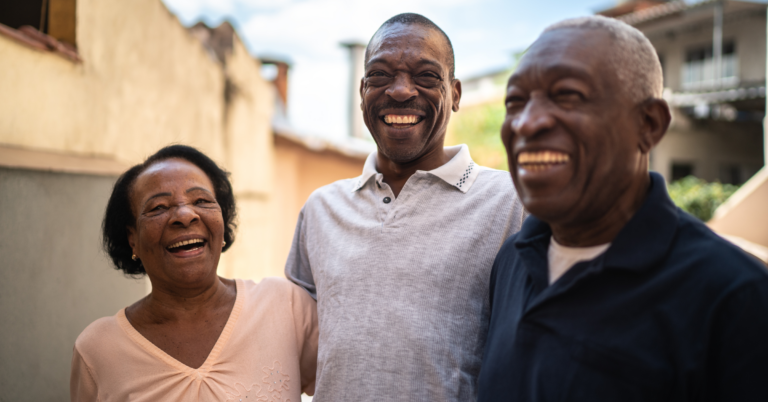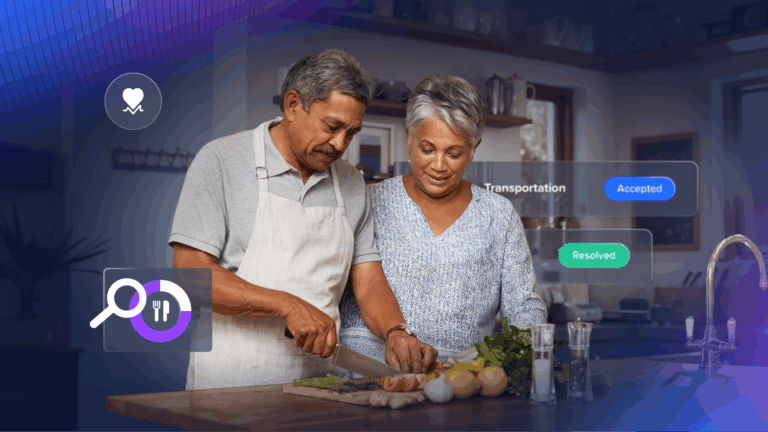
4 Ways Technology Can Strengthen Disaster Response
By: Zackery White, PhD, MPHInsights from industry leaders on how technology can fortify both short-term recovery and long-term sustainability.
Disasters can impact any community at any time, putting lives, infrastructure, and support systems at risk. Whether it’s a hurricane, wildfire, flood, or public health crisis, the immediate response to and long-term recovery from extreme events can often overwhelm a community’s health and social service systems, preventing individuals from receiving the services they need.
At Unite Us, we believe that disaster response requires more than personal preparedness—it requires connected communities that can respond in real-time and adapt to rapidly changing needs.
Recently, I had the honor of moderating our recent webinar on this topic: “Strengthening Community Connection: Leveraging Technology to Build Disaster Resilience.” During the webinar we explored how governments, community-based organizations (CBOs), and private sector partners can use technology to build more efficient and effective community infrastructure—and how this infrastructure supports a path to long-term sustainability after a disaster.
Meet the Speakers

Jeffrey Schlegelmilch, MPH, MBA, is the Director of the National Center for Disaster Preparedness at Columbia University’s Earth Institute, where he leads research and policy efforts to improve disaster readiness and response systems. He advises government agencies at all levels, frequently contributes to national media, and has testified before Congress on disaster policy. He is the author of Rethinking Readiness and co-author of Catastrophic Incentives, with expertise in public health preparedness, emergency management, and systems coordination.

Matt Hernandez is Senior Director for Public Sector at Unite Us. Prior to joining Unite Us, Matt’s background includes diverse experience in the healthcare industry and in the military. In both sectors, Matt’s portfolio involved emergency response planning and management, including during the COVID-19 pandemic.
TAKEAWAY 01
Technology improves communication and collaboration, enabling rapid and scalable resource activation during an emergency.
During disasters, traditional lines of communication are often disrupted. Phone lines go down, cell service is interrupted, and public gathering spaces may be closed or unreachable.
In these moments, it’s imperative that people have a one-stop-shop where they can get help and access the services they need. During the webinar, Hernandez discussed how Unite Us’ platform serves this role.
“Across the country, we have thousands of not-for-profits and community organizations that utilize Unite Us to screen individuals for needs, document what services that they’re providing for them, and then provide closed-loop feedback to the entities that they’re working with.”
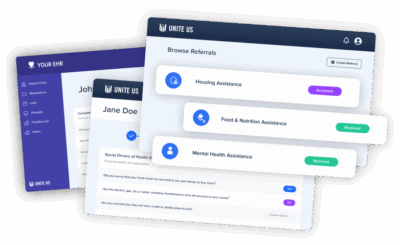 In an emergency, the Unite Us platform allows impacted individuals to self-screen and request assistance. It then urgently connects them to organizations to address their needs—from food, to housing, to clothing, and more—with accountability and follow-up.
In an emergency, the Unite Us platform allows impacted individuals to self-screen and request assistance. It then urgently connects them to organizations to address their needs—from food, to housing, to clothing, and more—with accountability and follow-up.
Time is of the essence in an emergency, and the right use of technology can mean the difference between life and death. Schlegelmilch highlighted several recent examples of this, including communities using Facebook during the COVID-19 pandemic to collect critical goods for child care providers, and refugee communities using WhatsApp to share information about local care services.
TAKEAWAY 02
Technology enables a data-driven approach to disaster response that prioritizes services where they’re needed most.
Collecting accurate and actionable data is key not just for immediate disaster response, but also for anticipating what comes next. Community-wide insights help leaders effectively allocate resources where they will be most impactful during a crisis (and beyond).
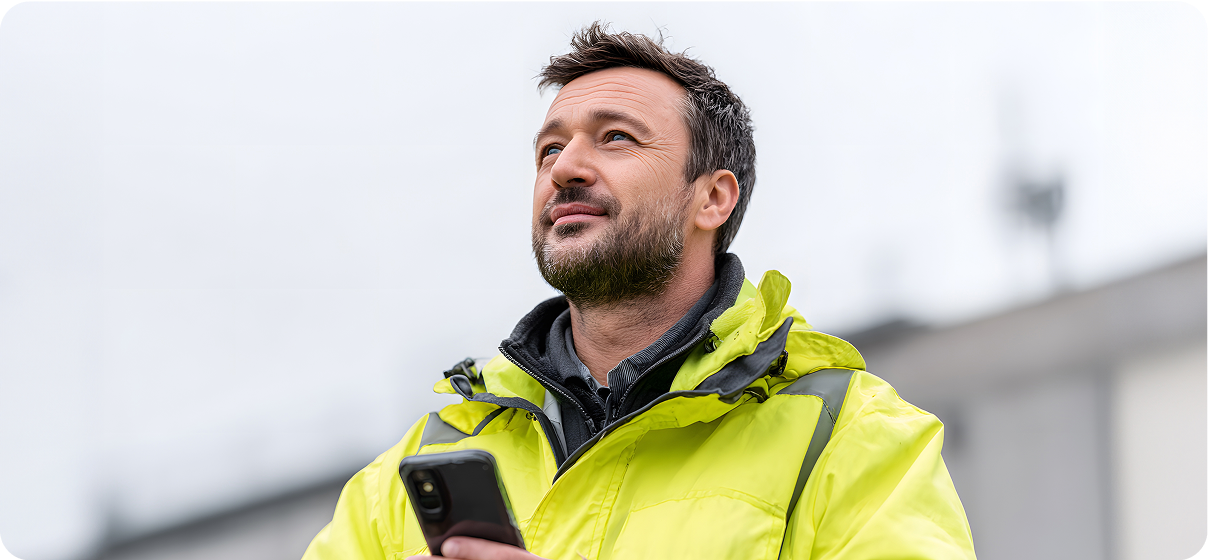
During the webinar, Hernandez spoke about how data can help leaders answer three of the most important questions during a disaster: What kinds of needs are we seeing? How are those needs being addressed? And, where there are gaps, can we shift resources there?
Hernandez also highlighted the importance of accurate, real-time data when trying to meet the needs of impacted individuals, many of whom have been displaced. Natural disasters often trigger sudden displacement, as families lose their homes and entire neighborhoods become uninhabitable. This disruption makes it harder to deliver timely, targeted services to the people who need them most.
Additionally, “the pre-existing organizations that would have helped serve [individuals impacted by the hurricane] could no longer serve them because [those organizations] were also impacted by the hurricane,” Hernandez noted. In these instances, data and technology can be critical to tracking changes in organizational service offerings, promoting adaptation to changing population needs.
TAKEAWAY 03
Technology facilitates community coalition building before disaster.
“The more investment you make in the beginning, the more you save in the end.”
This point, first made by Schlegelmilch and reiterated by Hernandez, was a consistent theme throughout the discussion.
Schlegelmilch talked about the key investments communities can make to proactively strengthen social cohesion, highlighting how community-driven social infrastructure, such as cafes or libraries, often have more benefit to the community than larger-scale infrastructure projects.
Hernandez further elaborated, “Some of these events seem to be getting more and more consequential. And so the more that we can do ahead of time, the better prepared we will be, from the cost standpoint and from the human aspect.”

In this respect, technology is a key part of preparation. With disaster response technology, community organizations, health systems, and private organizations are a part of a network, enabling a menu of support services to call upon after disaster, which allows for a no-wrong-door approach to receiving necessary services.
Individuals’ care journeys are tracked and documented, ensuring they can be quickly connected with personalized services in times of crisis. By building this network before disaster, these relationships can be relied upon to facilitate a speedy recovery and address changing post-disaster needs.
TAKEAWAY 04
Technology complements physical and human infrastructure, building more connected, cohesive, and resilient communities.
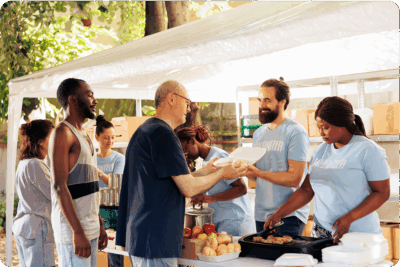 Disaster declarations may have an official end date, but the impact of these events often lingers far longer. The work of rebuilding lives, restoring services, and reconnecting communities can take months or even years. Whether it’s rebuilding homes after a wildfire or restoring social support networks after a pandemic, recovery takes time and requires community support.
Disaster declarations may have an official end date, but the impact of these events often lingers far longer. The work of rebuilding lives, restoring services, and reconnecting communities can take months or even years. Whether it’s rebuilding homes after a wildfire or restoring social support networks after a pandemic, recovery takes time and requires community support.
Human compassion, ingenuity, and resilience still sit at the heart of a community’s ability to respond to and rebuild from a crisis. Technology’s role is to strengthen and scale those human efforts, empowering people to build stronger, more connected communities—one relationship at a time.
